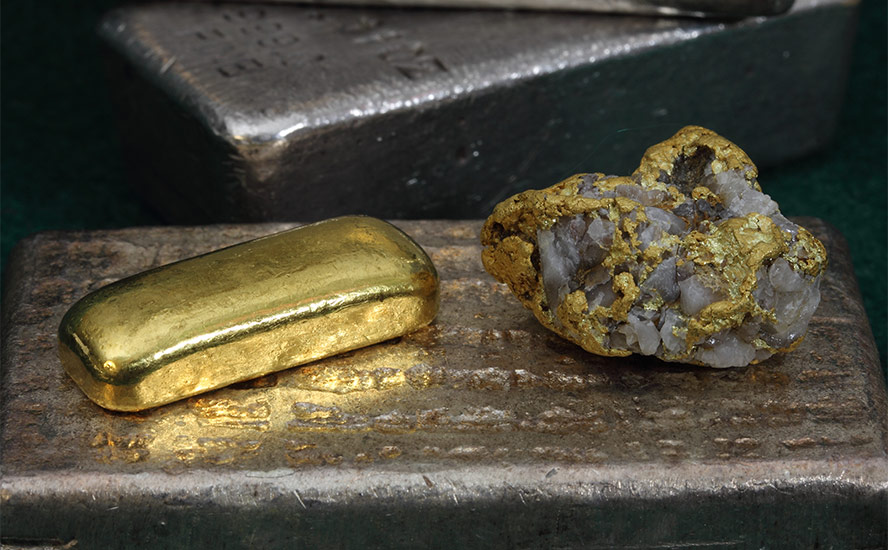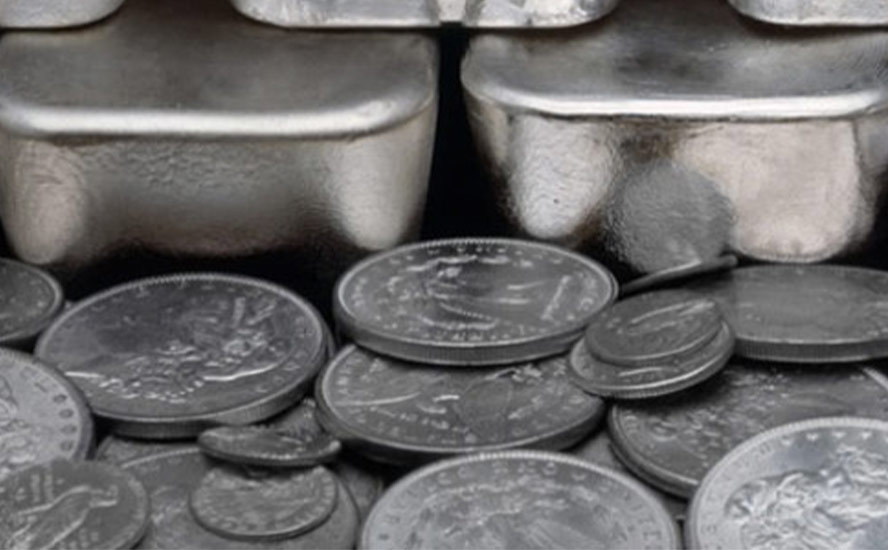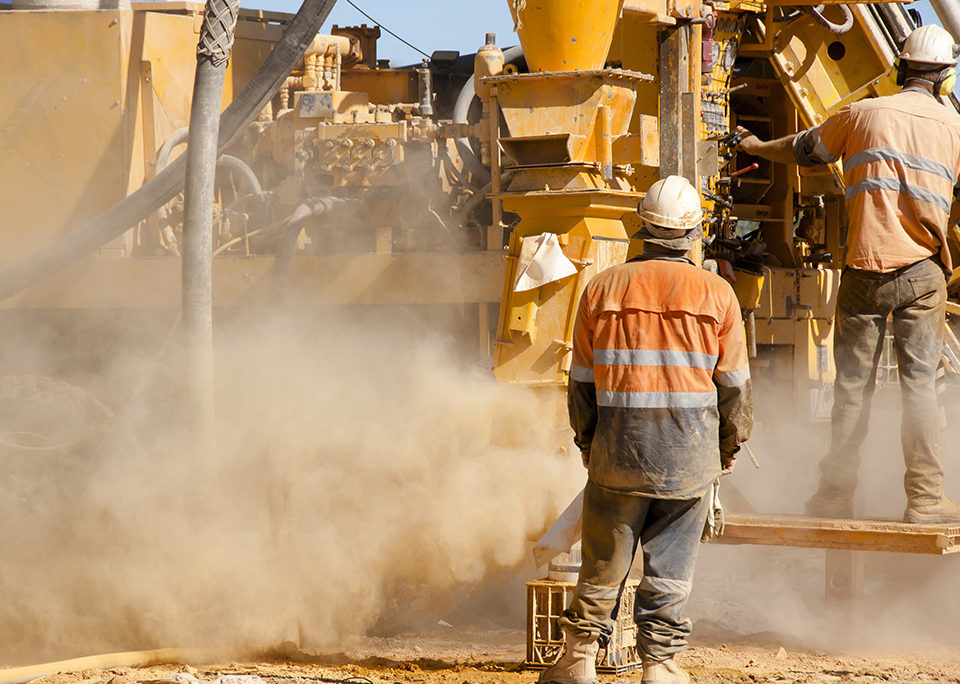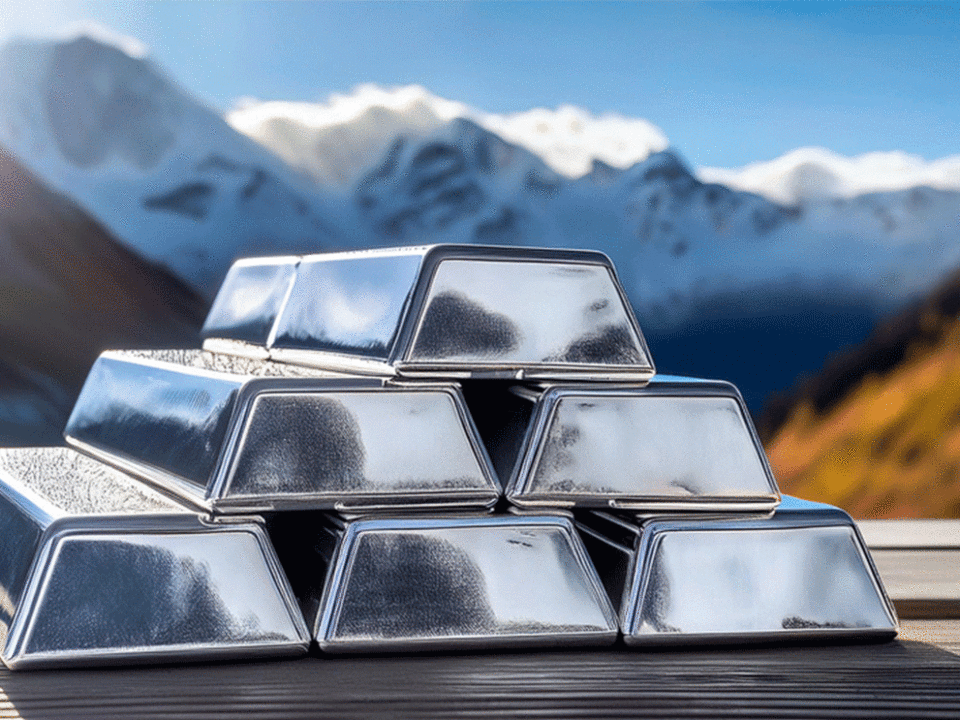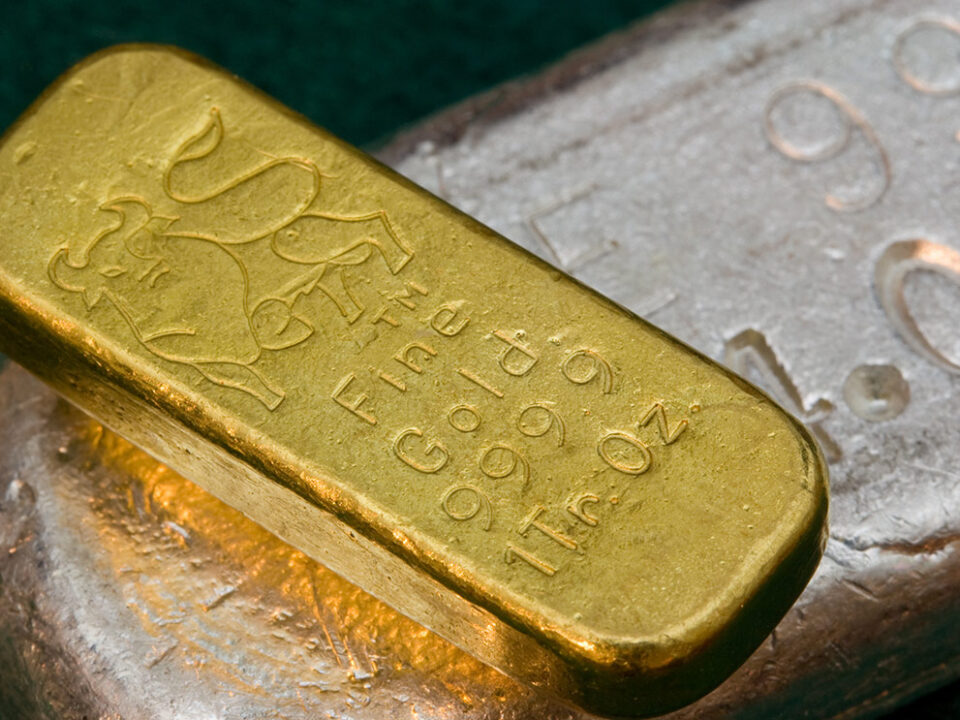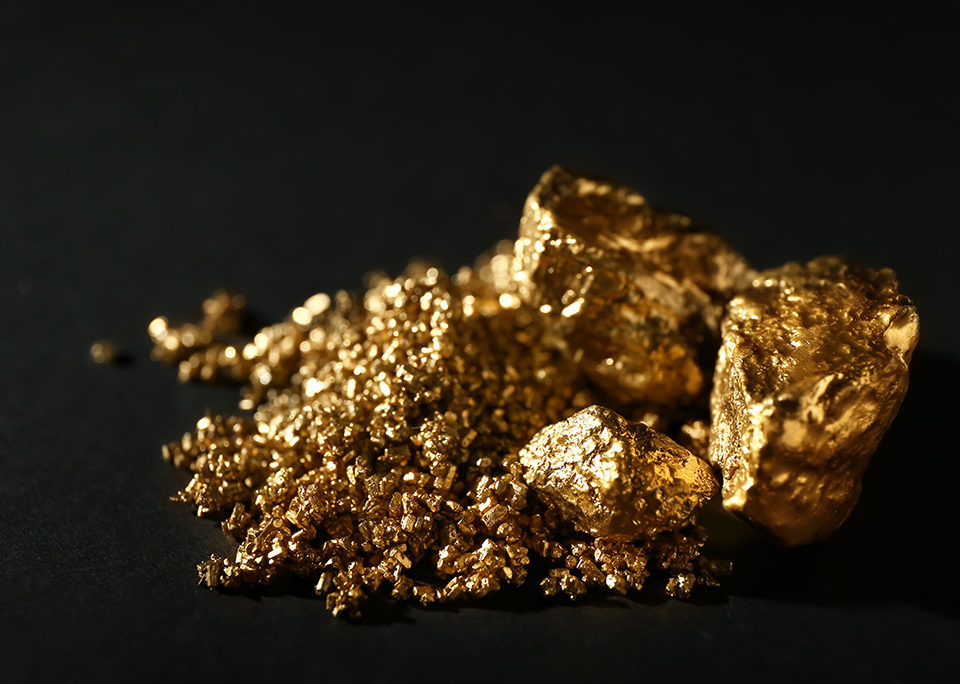Max Resource unlocking the puzzle of a massive sedimentary basin – Richard Mills
- Home
- Articles
- Metals Precious Metals
- Max Resource unlocking the puzzle of a massive sedimentary basin – Richard Mills
2023.10.31
Max Resource (TXV: MAX, OTC: MXROF; Frankfurt: M1D2) continues to advance its flagship CESAR project in northeastern Colombia. The Vancouver-based company this week said interpretation of preliminary airborne magnetic-radiometric survey data has identified four new targets within the AM district. The targets are AM-9 to AM-12.

According to Max, the success and effectiveness of the airborne survey has resulted in Max extending the survey by 6,000 line-km; it will now cover all three districts of the Cesar Project: AM, Conejo and URU.
The first 4,000 line-km of magnetic and radiometric data were collected along tightly spaced lines separated by 135 m, providing Max with two detailed data sets that are packed with geological information important to the process of mineral discovery and development.
The airborne survey is targeting the La Quinta formation, a thick sequence of Jurassic-age (163 to 191 million-years before present) volcanic and sedimentary rocks in Cesar Basin. Copper and silver mineralization has been discovered throughout the entire formation, but it is the sedimentary sequences that are of the greatest interest.
The four new targets were identified within the AM District where the sedimentary rocks are prevalent. The targets were identified in the airborne geophysical data by looking for structural patterns in unexplored areas of the Cesar property that are similar to those seen where mineralization is known to exist.
Radiometric surveys detect and map radiation from rocks and soils. The gamma radiation occurs from the natural decay of elements like uranium, thorium and potassium.
Magnetic surveys measure the spatial variations of the magnetic field. The results reflect the variations in the magnetic properties of the underlying rocks, and provide valuable information about their compositions and the structure of the Earth’s crust.
Magnetic and radiometric data were recorded simultaneously during the fixed-wing airborne survey. Max says the data sets will be instrumental for understanding the faults that act as conduits for mineralized fluids to infiltrate the sedimentary rocks and precipitate the copper-silver minerals.
Based on the strength of the data, Max has decided to extend the survey to cover the two districts south of AM: Conejo and URU. In total, 10,000 line-km of data covering 1,150 sq-km will be collected over all three districts of the CESAR copper-silver project.
“It is clear, even at this early stage, the techniques employed by Max will produce essential data sets for our continuing exploration efforts at CESAR,” said Max’s CEO Brett Matich, in the Oct 24 news. “The information from this survey will allow Max to evaluate its growing land package and pin-point new target areas for follow-up exploration. Equally important, the data will be used to expand existing targets through better understanding of their structural environment.”
“Expanding the survey was a logical decision given its obvious effectiveness over the AM District. There is a wealth of information contained in magnetic and radiometric data, and we are excited to see what the interpretation of the final, fully processed data will reveal,” he added.
Max commenced the airborne magnetic and radiometric survey at the end of August. The new targets were identified following an analysis of preliminary survey data for faults, which form the conduits for mineralized fluids to infiltrate the sedimentary rocks in the AM District. The pattern of faulting around known mineralization was evaluated and similar patterns were identified in areas where no exploration had been previously conducted.
Crews will assess each of the areas with prospecting, mapping and sampling in the coming weeks. I expect that additional targets will emerge once the airborne data has been fully processed and a rigorous interpretation conducted.
CESAR project
The CESAR project is situated along the copper-silver-rich Cesar Basin of northeastern Colombia. This region provides access to major infrastructure resulting from oil & gas and mining operations.
Max was the first to recognize the potential for the Cesar Basin and the Company’s land package now spans more than 1,150 km of geology prospective for sedimentary-hosted copper and silver deposits.
Max’s field teams have, so far, identified 26 targets across three separate districts of the 90-km Cesar copper-silver belt: AM, Conejo and URU.

While Max has demonstrated that the Cesar Basin is fertile for copper-silver mineralization over a large area, only a fraction of the basin has been explored. Therefore, Max says its geological teams are dedicated to regional exploration, with the goal of discovering additional copper-silver prospects over 1,000 square kilometers.
Currently, there are two depositional models at the CESAR project. Drilling at AM has confirmed that the sediment-hosted stratiform copper-silver mineralization found in the north end of the project (AM and Conejo) is analogous to the Central African Copper Belt (CACB) and the Kupferschiefer copper-silver deposits of central Europe. Work at in the south of the project has identified mineralization hosted along structures (faults) within the volcanic units of the La Quinta formation. It is theorized that the structurally hosted mineralization may represent the feeder system for the stratiform mineralization observed in the sedimentary layers.
Make no mistake. Sedimentary-hosted copper deposits can have staggering size and value. It’s estimated that nearly 50% of the copper known to exist in sediment-hosted deposits is contained in the CACB, headlined by Ivanhoe’s 95-billion-pound Kamoa-Kakula discovery in the Democratic Republic of Congo.
Kupferschiefer, considered to be the world’s largest silver producer and Europe’s largest copper source, is an orebody ranging from 0.5 to 5.5m thick at depths of 500m, grading 1.49% copper and 48.6 g/t silver. The silver yield is almost twice the production of the world’s second-largest silver mine.
Basin formation
The Cesar Basin has a Jurassic-Triassic stratigraphy characterized by Cu-Mo-Au porphyry and porphyry-related vein systems in the deeper parts of the basin, and sediment-hosted-style Cu-Ag deposits the higher levels.
The mineralization at CESAR occurs in the Jurassic-aged La Quinta formation which is up to 3,000 meters thick.
Initially, there were no sediments in what is now the Cesar basin, only volcanic and volcanoclastic rocks. As the basin opened up, the land subsided and salt water filled the basin. Terrestrial sediments began building-upon the ocean floor and over time became a thick sequence of sedimentary rocks.

For 10’s of millions of years the salty sea water in what is today’s basin scavenged the copper embedded in the volcanic rocks.
The next stage to occur was mountain-building. The tectonic regime changed to a compressive phase, at the end of the Cretaceous, due to the movement of the Caribbean Plate.
The compression closed the basin and uplifted the geology into what is now mountainous terrain. The key question is what happened to the sea water that was in the basin?
The fluids that had been percolating through the rocks and collecting copper-silver minerals had nowhere to go but through the faults, or breaks in the sedimentary rocks, caused by tectonic plate movement. Through a chemical reaction, the copper and silver precipitated out to form the mineralization Max Resource is finding throughout the CESAR project.
Faults
Let’s turn our attention to the map below showing the four new targets and previously discovered mineralization.

In the figure I see two parallel groups of faults striking in a northeast-southwest direction, and splays — smaller faults coming off the main faults — for example AM-07. At the bottom of the image there are two distinctive splays (e.g., AM-03) coming off an almost straight NE-SW-trending fault.

But there are two things at play that also must be considered.
The first is where does the right lithology, or rock unit, become exposed in the mountain range? Remember, during the mountain-building phase, buried rocks were thrust upward and at some point, the right-aged rocks (Jurassic in this case) were exposed at the mountain face. Is this exposure the fault? Or has the rock face been hundreds of meters from the actual fault?
Second, just because mineralized outcrops are found at surface, and their surface geochemistry, as seen on the map, looks impressive, it does not necessarily mean the outcrop is the “end” of the fault. What Max is looking for is the actual faults, or conduits to the fluid flow, that may or may not end in outcrops.
One way to describe the geological work so far is the surface outcrops are the “smoke” but Max needs to find the “fire”, i.e., the cross-cutting structures that personify the mineralizing trends. Finding both the right age of rocks and the structures has the potential to multiply by several factors the amount of mineralization being deposited.
Good data here is key. The better the database, the more chance Max, or any other junior resource company, has of finding the minerals, and knowing how they got there in the first place. Good data also greatly reduces the risk of embarking on a multi-million-dollar drill program by pointing the drills in the wrong direction.
Historical work and present survey
Max Resource has all kinds of technology at their disposal for identifying faults. They have historical seismic data, a Light Detection and Ranging (LiDAR) survey has been done showing the topography and potential faults at the URU District, and a satellite survey was completed showing the reflectivity of clay minerals.
The high-resolution magnetic-radiometric survey is an important data set in the process of discovery and evaluation. Now, instead of seeing maps of reflective minerals or the topography, geologists can quantify the magnetic signature of specific rocks, and they can see the disruption of a trend that is likely worth following up.
These surveys are commonly used in mineral exploration and while some provide better-quality information than others, there is no one survey that works best and cancels out the others.
Conclusion
So far Max has found plenty of “smoke”, now it needs to find the fires that are “burning” underneath the 90-km Cesar copper-silver belt. What Max needs to find is the plumbing — the fluid conduits that pushed into those sedimentary sequences.
Considering the tight 135 meter spacing of the magnetic-radiometric survey that has recently been upsized to 10,000 line-km, there should be a plethora of data to choose from. Finding both the right age of rocks and the structures has the potential to multiply by several factors the amount of mineralization being deposited.
Max is going about developing CESAR the right way, imo using the same methods that a major would. It’s a big regional program and there are only so many ways of attacking it. Max is doing them all: prospecting for surface outcrops, conducting rock sampling (geochemical surveys), flying geophysical surveys including magnetic-radiometric and LiDAR, and, in the new year, select drilling at the highest-priority targets.
A quote from a German publication that covered the identification of the four new targets summarizes Max’s goals at CESAR quite well:
“Conclusion: Max Resource’s ambitions go far beyond those of an ordinary copper explorer. Under the watchful eye of some of the world’s leading copper producers, Max Resource aims to put the Colombian foothills of the Andes on the international map of major copper destinations.”
It’s a good quote, but I will take it a step further. Projects are often touted by junior explorers as “company makers”. MAX’s CESAR Project is so large, so potentially rich in copper and silver, that it is not only a company maker but a “country maker”.
CESAR could put Colombia on the global copper map and revitalize the entire economics of the country.
Max Resource Corp.
TSXV:MAX; OTC:MXROF; Frankfurt:M1D2
Cdn$0.11 2023.10.30
Shares Outstanding 161.9m
Market cap Cdn$19.4m
MAX website
Richard (Rick) Mills
aheadoftheherd.com
subscribe to my free newsletter
Legal Notice / Disclaimer
Ahead of the Herd newsletter, aheadoftheherd.com, hereafter known as AOTH.
Please read the entire Disclaimer carefully before you use this website or read the newsletter. If you do not agree to all the AOTH/Richard Mills Disclaimer, do not access/read this website/newsletter/article, or any of its pages. By reading/using this AOTH/Richard Mills website/newsletter/article, and whether you actually read this Disclaimer, you are deemed to have accepted it.
Any AOTH/Richard Mills document is not, and should not be, construed as an offer to sell or the solicitation of an offer to purchase or subscribe for any investment.
AOTH/Richard Mills has based this document on information obtained from sources he believes to be reliable, but which has not been independently verified.
AOTH/Richard Mills makes no guarantee, representation or warranty and accepts no responsibility or liability as to its accuracy or completeness.
Expressions of opinion are those of AOTH/Richard Mills only and are subject to change without notice.
AOTH/Richard Mills assumes no warranty, liability or guarantee for the current relevance, correctness or completeness of any information provided within this Report and will not be held liable for the consequence of reliance upon any opinion or statement contained herein or any omission.
Furthermore, AOTH/Richard Mills assumes no liability for any direct or indirect loss or damage for lost profit, which you may incur as a result of the use and existence of the information provided within this AOTH/Richard Mills Report.
You agree that by reading AOTH/Richard Mills articles, you are acting at your OWN RISK. In no event should AOTH/Richard Mills liable for any direct or indirect trading losses caused by any information contained in AOTH/Richard Mills articles. Information in AOTH/Richard Mills articles is not an offer to sell or a solicitation of an offer to buy any security. AOTH/Richard Mills is not suggesting the transacting of any financial instruments.
Our publications are not a recommendation to buy or sell a security – no information posted on this site is to be considered investment advice or a recommendation to do anything involving finance or money aside from performing your own due diligence and consulting with your personal registered broker/financial advisor.
AOTH/Richard Mills recommends that before investing in any securities, you consult with a professional financial planner or advisor, and that you should conduct a complete and independent investigation before investing in any security after prudent consideration of all pertinent risks. Ahead of the Herd is not a registered broker, dealer, analyst, or advisor. We hold no investment licenses and may not sell, offer to sell, or offer to buy any security.
Richard owns shares of Max Resource Corp. (TSXV:MAX)> MAX is a paid advertiser on his site aheadoftheherd.com
This article is issued on behalf of MAX
Legal Notice / Disclaimer
Ahead of the Herd newsletter, aheadoftheherd.com, hereafter known as AOTH.Please read the entire Disclaimer carefully before you use this website or read the newsletter. If you do not agree to all the AOTH/Richard Mills Disclaimer, do not access/read this website/newsletter/article, or any of its pages. By reading/using this AOTH/Richard Mills website/newsletter/article, and whether you actually read this Disclaimer, you are deemed to have accepted it.









